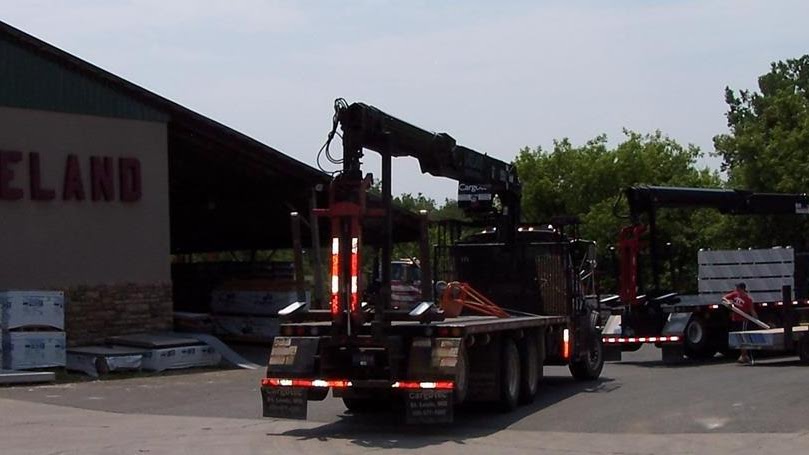The water cribs in Chicago are structures built to house and protect offshore water intakes used to supply the City of Chicago with drinking water from Lake Michigan. Water is collected and transported through tunnels located close to 200 feet beneath the lake, varying in shape from circular to oval, and ranging in diameter from 10 to 20 feet. The tunnels lead from the cribs to one of two water purification plants located onshore, the Jardine Water Purification Plant (the world's largest) and the South Water Purification Plant, where the water is then treated before being pumped to all parts of the city as well as 118 suburbs. The city is served by six existing cribs, Four Mile Crib (1891), 68th Street Crib (1892), Carter H. Harrison Crib (1900), Edward F. Dunne Crib (1909), Wilson Avenue Crib (1918) (located at 41°57?58?N 87°35?28?W), and William E. Dever Crib (1935).
Two Mile Crib
The Two-Mile Crib was constructed as part of a scheme by Ellis S. Chesbrough in 1865, to help with the purification of the water because of damage caused by the city dumping sewage into the lake. Construction of the crib began in May 1864, miners and workers worked 24 hours a day and six days a week. The total completion of the project was on March 1867 and costing the city $380,784. Purified water was pumped to the Chicago Avenue Pumping Station which still stands to this day on North Michigan Avenue.
Michigan Building Supply Video
Four Mile Crib
The Four Mile Crib (located at 41°52?22?N 87°32?45?W) was put into service in 1891 to help with the problem of getting uncontaminated water to Chicago and various neighborhoods. To deal with this, they built the new crib even further than the two mile crib. The brick alone cost $472,890.93, but the total project cost $1,526,143.68. This crib was very special, as there was a steam heating plant installed in 1898. This kept the crib at a temperature of 70 degrees and allowed plant workers to reside there during the winter, who helped to stop the formation of ice. In 1932, the Bureau of Lighthouses reported that a submarine cable had been laid and two rooms had been added on to the crib.
68th Street Crib / Edward F. Dunne Crib
The 68th Street Crib (located at 41°47?10?N 87°31?54?W) was built in 1892 two miles offshore the eastern end of 68th Street in Chicago. A cement hexagon-shaped crib with a brick structure atop, it originally supplied two tunnels, a 20-foot diameter tunnel to the Jardine Water Purification Plant and a 10-foot diameter tunnel to the South Water Purification Plant. The crib was equipped with a navigational warning light atop a steel-skeleton lighthouse and a fog bell that tolled every 12 seconds when needed.
In 1908, construction began on a new Intermediate Crib adjoining the 68th Street Crib. Work ceased after a fire broke out on the crib January 30, 1908 claiming the lives of 70 of 100 workmen.
The Edward F. Dunne Crib was built in 1909 to replace the Intermediate Crib. Named after Chicago Mayor Edward Fitzsimmons Dunne, who was in office at the time crib plans were approved, the 110-foot diameter circular crib stands in 32 feet of water and houses a 60-foot diameter interior well connected to two new tunnels. The Dunne Crib is situated 50 feet from the 68th Street Crib and accessible by a steel footbridge, allowing one set of keepers to service both cribs.
Carter H. Harrison Crib / William E. Dever Crib
The Carter H. Harrison Crib (located at 41°54?59?N 87°34?23?W) replaced the Two Mile Crib in 1900. This crib was replaced by The William E. Dever Crib (located at 41°57?58?N 87°35?28?W) that was built alongside it in 1935. As the demand increased for water this meant that the Carter H. Harrison crib continued in service until 1997. In 1998 the tunnels leading from the Carter Harrison Crib to shore were drained for inspection, a process that was surrounded by controversy. Some experts feared that pumping the tunnels dry would result in a catastrophic collapse, while others guaranteed that collapse was not possible. Portions of the tunnel did in fact collapse. City lawyers soon filed suit against the engineers and contractors. The suit charged that the engineers, Alvord, Burdick & Howson, were negligent for advising the city that it was safe to drain the tunnels. It also charged that Luedtke Engineering Co., of Michigan, did the work in a way that caused the collapse. As a result of the collapse, the city spent $5.3 million to fill in a portion of the tunnel under Lake Shore Drive to prevent a possible additional collapse.
Carter-Harrison Crib images
Are You Looking for Products
Here some products related to "Water Cribs In Chicago".
Michigan Ladder 1311-03 2..
Climb Pro by Michigan Lad..
Hudson's: Detroit's Legen..
Amazon Jobs | Jobs with A..
Get these at Amazon.com* amzn.to is official short URL for Amazon.com, provided by Bitly
Source of the article : here


EmoticonEmoticon